Marine Biology: Fascinating Facts and Insights
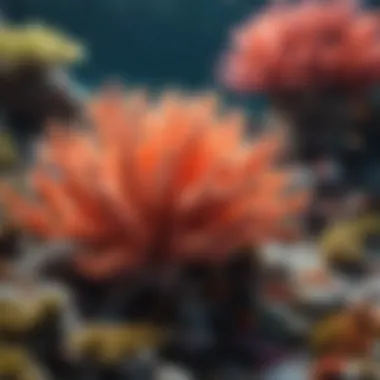
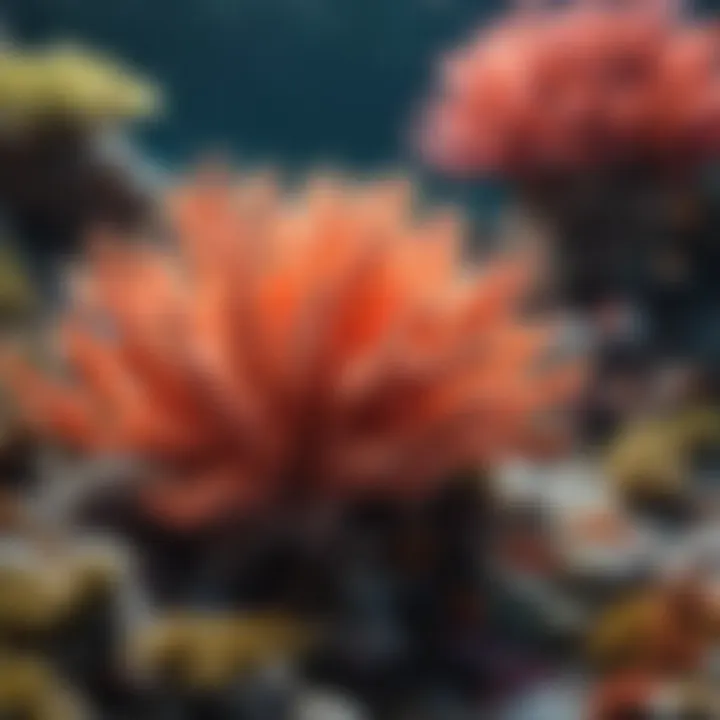
Nature Topic Overview
Marine biology is a broad and intriguing field. It is the scientific study of life in oceans and other saltwater environments. This discipline covers a vast range of living organisms, from tiny plankton to the majestic blue whale. Understanding marine biology is essential for recognizing the intricate dynamics within our oceans. Oceans are home to about 230,000 known species, and many are yet to be discovered. These ecosystems play a critical role in our planet’s health.
Marine organisms interact with each other, as well as their environments. For example, coral reefs support diverse marine life and prevent coastal erosion. On the other hand, ocean currents and temperature affect the distribution and migration of marine species. This article will explore essential facts about marine life and their habitats while focusing on human impact and conservation efforts.
Fun Facts and Trivia
- Did you know? The largest creature on Earth is the blue whale. It can grow to about 100 feet long!
- Interesting point: Jellyfish have no brain, heart, or bones. They are mainly made up of water.
- Unique fact: Some species of fish can change their gender, like the clownfish, which starts as a male and can become female.
- Engaging point: There are underwater volcanoes called hydrothermal vents. They release hot, mineral-rich water, creating unique ecosystems!
These fun facts can help young readers connect with marine life and stimulate curiosity. Visual aids, like pictures of these organisms, can enhance learning. Consider using colorful infographics or interactive games related to the facts provided.
Wildlife Explorations
The ocean is home to an array of species. Some notable examples include:
- Coral: These are marine invertebrates that form large reefs. They provide shelter for many fish species.
- Sea turtles: These reptiles are known for their long migrations and play important roles in marine ecosystems.
- Octopuses: They are known for their intelligence and ability to camouflage, using unique skills to escape predators.
By understanding different species, readers can appreciate the diversity of marine life. For instance, ask questions to engage young minds: What adaptations help sea turtles survive?
Interactive features like quizzes or puzzles about ocean life can make learning more enjoyable. These activities encourage children to think critically about marine biology.
Environmental Awareness
The health of marine ecosystems is essential. However, human activities have negative impacts on oceans. Pollution, overfishing, and climate change threaten marine life.
- Conservation tips for young readers:
- Reduce plastic use and opt for reusable bags.
- Participate in local beach clean-ups.
- Educate friends and family about marine conservation.
Our ocean ecosystems require protection. Understanding these challenges and solutions prepares children to be responsible citizens. Marine conservation not only preserves biodiversity but also benefits future generations.
Ensuring the health of our oceans is crucial for life on Earth.
DIY Nature Activities
Hands-on activities can deepen understanding of marine biology. Here are a few ideas:
- Ocean in a bottle: Layer water with oil to demonstrate density. Add blue food coloring for visual effect.
- Shell collection: Go to a beach and collect various seashells. Research their origins and learn about the animals that lived inside them.
- Nature crafts: Create a scrapbook featuring ocean and marine life pictures. Encourage kids to draw their favorite marine animals and write facts about them.
- Explore outdoors: Visit local aquariums, tide pools, or beaches. Observing marine life in person enhances appreciation for the ocean.
These activities promote curiosity and foster a connection with the environment. They can also serve as platforms for learning.
Prologue to Marine Biology
Understanding marine biology is important because it provides insights into the world's oceans and the myriad life forms they harbor. This field of science offers knowledge about the behaviors, interactions, and environments of marine organisms. Studying marine biology is crucial as it helps us appreciate both the beauty and complexity of life underwater. Moreover, it enlightens us about the role these ecosystems play in global health and climate regulation.
Definition and Scope
Marine biology is the study of marine organisms, their behaviors, and interactions with the environment. This discipline encompasses various topics, such as biological processes, ecological relationships, and evolutionary mechanisms. The scope of marine biology is broad. It covers everything from tiny plankton to large whales. Marine biologists explore the diversity of life found in oceans, seas, and coastal areas, including freshwater environments connected to the ocean.
The study is vital for several reasons:
- It informs us about biodiversity and the preservation of endangered species.
- It helps in understanding climate change impacts on oceanic life.
- It supports fisheries management and sustainable practices to ensure food security.
Historical Overview
Marine biology has a fascinating history. It dates back to ancient civilizations when people relied on seafood for sustenance. Early scholars like Aristotle wrote about marine life, laying the groundwork for future studies. The invention of the microscope in the 17th century enabled scientists to discover microscopic life forms, expanding the knowledge base.
As technology advanced, so did marine biology. The 19th century saw the establishment of oceanographic institutions, further pushing the boundaries of this science. Modern marine biology has evolved into a multidisciplinary field, integrating aspects of ecology, climatology, and genetics. Today, marine biologists use advanced tools and techniques, such as remote sensing, to study vast ocean areas and gather data that informs conservation efforts.
"The oceans are a crucial component of the Earth's ecosystem, and understanding their biology is essential for preserving life on our planet."
This brief history illustrates how marine biology has grown from basic observations to a sophisticated science vital for our understanding of marine environments.
Ocean Zones and Their Characteristics
The ocean is a vast and complex environment, divided into distinct regions known as ocean zones. Understanding these zones is essential for marine biology. Each zone has its own unique characteristics, supporting different types of marine life. This knowledge is vital for scientists studying ocean ecosystems and how human activities affect them. By exploring ocean zones, we gain insights into biodiversity, habitat conservation, and ecosystem dynamics.
Intertidal Zone
The intertidal zone is the area where the ocean meets the land. This zone experiences both high and low tides, resulting in a unique environment. During high tide, many marine organisms are submerged in water. At low tide, these organisms may be exposed to air. This fluctuation creates a challenging habitat. Organisms in this zone have special adaptations. For example, barnacles can close their shells to retain moisture, while sea urchins attach themselves to rocks. Storm waves frequently reshape the rocky surfaces, affecting where plants and animals can live. It is a dynamic environment that hosts a variety of species including crabs, sea stars, and kelp.
Neritic Zone

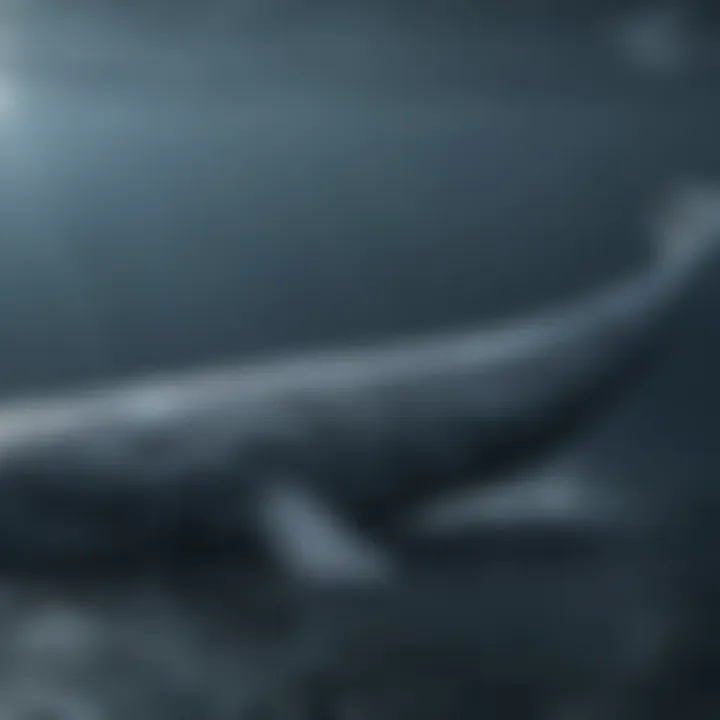
Just beyond the intertidal zone lies the neritic zone. This zone extends from the low tide line to the continental shelf. The neritic zone is rich in nutrients, which supports a dense population of marine life. Here, sunlight penetrates easily, allowing photosynthetic organisms to thrive. Coral reefs can be found in this zone as well, serving as habitats for many fish species. Fishermen often target this area due to its abundant resources. The neritic zone is significant for both ecological balance and human use. However, it also faces challenges from overfishing and pollution.
Oceanic Zone
The oceanic zone is a deeper part of the ocean, extending from the continental shelf. It is much less populated than the neritic zone. The lack of sunlight means that photosynthesis is limited. Still, this zone supports many unique creatures such as whales and deep-sea fish. The oceanic zone is characterized by profound darkness and cold temperatures. Deep-sea ecosystems reveal some of the most specialized adaptations in the marine world, such as bioluminescent organisms. Understanding this zone is crucial for comprehending ocean health and biodiversity.
Benthic Zone
The benthic zone refers to the ocean floor and the organisms that live there. This zone can be found at any depth of the ocean. It is home to various creatures, including starfish, clams, and sea cucumbers. The benthic zone is important for nutrient recycling. Organisms feed on detritus, which is the dead matter that settles on the ocean floor. This process forms the base of the marine food web. Investigation into this zone offers insights into the physical conditions of the seafloor and its inhabitants. With increasing interest in underwater mining, the benthic zone is becoming a focal point for research and conservation efforts.
Diversity of Marine Life
Diversity of marine life is a core aspect of marine biology and it underlines the health of oceanic environments. The variety of life forms in the oceans affects ecological balance, resilience of ecosystems, and the resources available to humans. Understanding this diversity gives insights into the roles different species play in their habitats. For instance, the interconnectedness between species illustrates how removing one can have rippling effects on the others, highlighting the need for responsible stewardship of marine resources. The diversity itself offers benefits such as potential medical discoveries, ecological stability, and the aesthetic and recreational value of marine environments.
Marine Mammals
Marine mammals play important roles in marine ecosystems and capture the interest of many due to their intelligence and unique adaptations. Their presence can indicate the health of ocean environments.
Dolphins
Dolphins are known for their social behavior and high intelligence. They are popular in marine biology discussions because of their ability to communicate and work together. These mammals often engage in playful activities, which showcase their cognitive abilities. A unique feature of dolphins is their echolocation, which helps them navigate and hunt in murky waters. This ability provides advantages for survival, allowing them to detect prey and avoid predators more effectively.
Whales
Whales are among the largest marine mammals, and their size alone makes them fascinating. They contribute significantly to marine ecosystems as they affect the food chain and nutrient cycling. Their songs are also a point of interest, adding to the mystery of their communication. A unique aspect of some whale species is their migratory patterns, which can span thousands of miles. These migrations have advantages for breeding and feeding but also make them vulnerable to human activities along their routes.
Seals
Seals are known for their playful nature and are crucial to marine environments. They serve as predators, maintaining balance in fish populations. A key feature of seals is their ability to thrive in both water and land environments, which gives them a wider range of habitats. However, they also face threats from climate change and habitat destruction, making their study vital for conservation efforts.
Fish Species
Fish represent a vast majority of marine species and play an essential role in aquatic food chains. The diverse types of fish each have different adaptations that allow them to survive in their specific habitats.
Sharks
Sharks are often viewed as apex predators and are critical to maintaining the health of marine ecosystems. Their unique shark skin allows for reduced drag in water, improving their hunting efficiency. They are beneficial to study as they indicate the health of the overall marine system. However, they are often misunderstood and face threats from overfishing, leading to declining populations.
Coral Reef Fish
Coral reef fish exhibit bright colors and diverse forms. They contribute to the vibrant biodiversity of coral ecosystems. Their role in coral health, such as through grazing on algae, is vital for reef sustainability. A unique aspect of many coral reef species is their symbiotic relationship with corals, which fosters mutual benefits, though this makes them sensitive to environmental changes.
Deep-Sea Fish
Deep-sea fish inhabit some of the most extreme conditions on the planet. Their adaptations to high pressure and near absence of light are remarkable. These fish often possess bioluminescence, which aids in attracting prey and mates. This unique feature highlights how organisms can adapt to very specific habitats, though they also face unknown impacts from deep-sea mining and climate change.
Invertebrates
Invertebrates represent a large portion of marine life, and their presence is crucial for marine ecosystem functioning. They serve essential roles, including bioindicators for environmental health.
Octopuses
Octopuses are renowned for their intelligence and ability to camouflage. Their advanced problem-solving skills make them a captivating topic in marine biology. A defining characteristic is their three hearts and ability to change color, which serves combat and communication purposes. This unique feature allows them to evade predators but also makes them vulnerable to habitat loss.
Sea Urchins
Sea urchins are important for maintaining kelp forest ecosystems. Their grazing helps control algae growth, supporting the health of kelp forests. A key feature is their spiny exterior, which offers protection from predators. However, their populations can increase dramatically, leading to overgrazing, which poses challenges for kelp forest health.
Jellyfish
Jellyfish are simple yet fascinating creatures. Their life cycle and high reproductive rates allow them to thrive in various marine environments. A unique feature of jellyfish is their ability to sting, which they use for defense and to capture prey. While they can serve as indicators of ecosystem shifts, harmful blooms can disrupt marine food webs and impact fisheries.
Understanding the diversity of marine life enhances our knowledge about ecological health and the significance of every organism within the oceans. It's vital for conserving these resources for future generations.
Marine Ecosystems
Marine ecosystems are vital components of our planet's health and wellbeing. They cover about 70% of the Earth's surface and comprise various environments, each hosting unique forms of life. Their significance cannot be overstated. Marine ecosystems play crucial roles in regulating climate, supporting biodiversity, and providing humans with resources like food, medicine, and recreational opportunities. The intricate relationships among species within these ecosystems contribute to their resilience and function.
Coral Reefs
Coral reefs are one of the most diverse and productive marine ecosystems. Often referred to as "rainforests of the sea," these structures are built by tiny living organisms called coral polyps. Coral reefs provide habitat for thousands of marine species, including fish, invertebrates, and other organisms. They serve as nurseries for fish, which rely on the complex habitat for protection during their early stages of life.
Constructing coral reefs depends on several factors, including sunlight, temperature, and water quality. However, these ecosystems face many threats. Climate change causes ocean temperatures to rise, leading to coral bleaching, which is the loss of colorful algae that provide energy to corals. Moreover, pollution and overfishing disrupt the balance of these ecosystems, threatening their survival. Protecting coral reefs is vital for maintaining marine biodiversity and supporting coastal communities.


"Coral reefs support about 25% of all marine species, despite covering less than 1% of the ocean's floor."
Mangroves
Mangroves are unique coastal forests found in tropical and subtropical regions. They are characterized by salt-tolerant trees that thrive in intertidal zones. Mangroves play several critical roles in coastal ecosystems. They stabilize shorelines, prevent erosion, and provide habitat for wildlife. Additionally, these ecosystems act as nurseries for various marine species, such as shrimp and fish.
The roots of mangrove trees trap sediments, creating a rich environment for plants and animals. They also filter pollutants from the water, enhancing water quality. However, like coral reefs, mangroves face threats from human activities. Coastal development, deforestation, and pollution have led to significant loss of mangrove habitats. Conservation efforts are crucial to preserving these important ecosystems and the services they provide.
Estuaries
Estuaries are dynamic environments where freshwater from rivers meets saltwater from the ocean. These transition zones are brimming with life and promote rich biodiversity. Estuaries serve as vital habitats for birds, fish, and other wildlife. They provide feeding and breeding grounds for many species, and they are critical to the life cycles of various marine organisms.
Estuaries also provide essential services to humans, including flood protection and water filtration. The complex mix of water and sediments in estuaries creates nutrient-rich environments for plant life. However, like other marine ecosystems, estuaries are under threat from pollution, habitat destruction, and climate change. Protecting these environments is crucial for maintaining ecological balance and ensuring the sustainability of the marine life that relies on them.
Human Impact on Marine Environments
Human activities have profound effects on marine environments. Understanding these impacts helps to address the challenges facing our oceans and their ecosystems. Our actions, whether intentional or not, play a significant role in shaping marine habitats and wildlife.
Pollution
Plastic Waste
Plastic waste is a critical concern for marine environments. Millions of tons of plastic are dumped into the oceans every year. This form of pollution not only harms marine life but also disrupts the health of entire ecosystems. One key characteristic of plastic waste is its durability. Plastics can take hundreds of years to break down, leading to an accumulation of debris in the ocean, creating hazards for marine animals.
Plastics often break into smaller pieces known as microplastics. These tiny particles can be ingested by fish and other marine organisms, entering the food chain. Thus, plastic waste is an issue that extends beyond just immediate pollution. It poses long-term risks to both marine ecosystems and human health, as toxins in plastics can eventually affect those who eat seafood.
Toxic Chemicals
Toxic chemicals in our oceans are another major concern. These substances can originate from agricultural runoff, industrial discharges, and even household products. One key characteristic of toxic chemicals is their ability to harm organisms at very low concentrations. This makes them particularly dangerous, as they can disrupt hormonal systems in marine life, leading to developmental issues or behavioral changes.
A unique feature of toxic chemicals is that they often accumulate in the tissues of marine animals over time. This bioaccumulation can lead to severe consequences for those higher up in the food chain, including humans. This pollution shows that our choices in everyday items can have significant ripple effects in marine environments.
Overfishing
Overfishing is another significant impact humans have on the oceans. This practice occurs when fish are caught faster than they can reproduce. This unsustainable fishing leads to a depletion of fish populations and can upset the balance of marine ecosystems. Overfishing affects not only targeted species but also the overall health of the marine environment.
When fish populations decline, it disrupts food webs. Predatory species may struggle to find food, resulting in their decline as well. Additionally, the methods used for overfishing, such as trawling, can destroy habitats on the ocean floor, leading to further loss of biodiversity. Recognizing the signs of overfishing is crucial for maintaining healthy marine ecosystems.
Climate Change
Climate change is transforming marine environments. Rising ocean temperatures, acidification, and changing currents have far-reaching consequences for marine life. For example, many coral reefs are sensitive to temperature changes. Even slight increases can lead to coral bleaching, a condition where corals lose their vibrant colors and become more susceptible to disease.
The impact of climate change extends beyond corals. Fish species, for instance, may shift their habitats to cooler areas, which can affect the fishing industry and local economies. Additionally, altering ocean currents can impact nutrient distribution, altering entire ecosystems. Recognizing climate change as a critical concern helps emphasize the urgent need for sustainable practices that protect marine environments.
Understanding human impact on marine environments is essential in promoting policies for conservation. We are all responsible for the oceans. If we take action, we can protect marine life for future generations.
Addressing these challenges not only benefits marine ecosystems but also humanity. Healthy oceans provide essential resources such as food, climate regulation, and recreational opportunities. By taking collective action, we can make a meaningful difference.
Conservation Efforts
Conservation efforts in marine biology play a crucial role. They aim to protect marine environments and ensure sustainable use of ocean resources. Two main areas of focus are protected areas and sustainable practices. Understanding these efforts is vital for maintaining biodiversity and the health of our oceans. Conservation is not just about saving animals; it's about preserving entire ecosystems that are essential for our planet's well-being.
Protected Areas
Protected areas are designated zones where human activity is limited to either protect biodiversity or restore natural ecosystems. These areas are often found in places with unique marine habitats. By restricting activities like fishing and tourism in protected zones, marine life can thrive.
Benefits of protected areas include:
- Establishing safe breeding grounds for vulnerable species.
- Helping restore habitats that have been damaged.
- Providing researchers a place to study ecosystems without human interference.
The establishment of marine protected areas has shown positive changes. For example, fish populations increase, leading to healthier reefs. This balance is crucial as it can affect surrounding areas that rely on these ecosystems. When marine life flourishes, the benefits extend beyond the protected zones.
Sustainable Practices
Responsible Fishing
Responsible fishing is an important practice in marine conservation. It focuses on capturing fish in a way that maintains fish populations and health of the ecosystem. This practice avoids overfishing, unintentional catch, and damage to habitats.
Key characteristics of responsible fishing include:
- Use of selective gear that minimizes bycatch.
- Setting catch limits to prevent depleting fish stocks.
- Promoting the consumption of sustainably sourced seafood.
Being responsible leads to better fish stocks in the long run. When fish populations are managed well, fisheries can become more profitable. This balance between industry needs and environmental care is essential. Responsible fishing is, therefore, a smart choice for the future of our oceans.
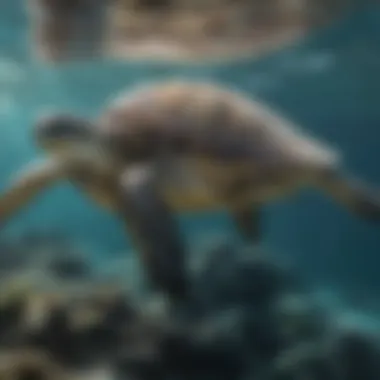
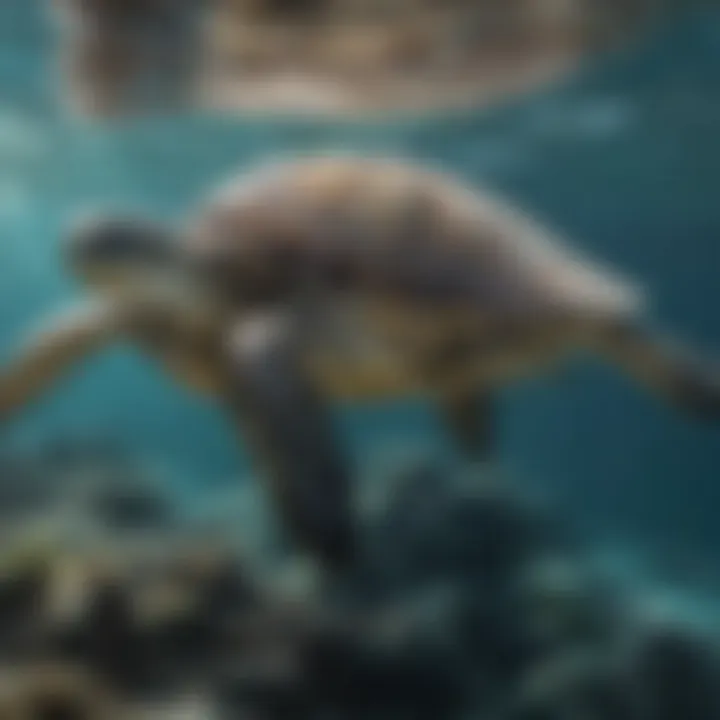
Eco-Tourism
Eco-tourism is another sustainable practice that benefits marine biology. It encourages visitors to engage with marine environments in a way that does not harm them. This type of tourism promotes awareness and interest in conservation efforts among the public.
The key aspects of eco-tourism include:
- Providing educational experiences about marine ecosystems.
- Supporting local economies through responsible travel.
- Encouraging conservation efforts by showcasing the beauty of marine life.
However, eco-tourism must be managed carefully. Too many visitors can lead to disturbances in marine habitats. Yet, when done right, eco-tourism can raise funds and awareness for conservation. This way, everyone wins—local communities, tourists, and the ocean itself.
"Conservation is a commitment to be responsible stewards of the oceans, preserving our natural resources for future generations."
Engaging in conservation efforts helps secure the future of marine life. Protecting space and promoting sustainable practices are steps we can take toward healthier oceans. The interplay between protected areas and responsible tourism creates a pathway to sustain our planet's vital marine resources.
The Future of Marine Biology
The future of marine biology is a critical topic to explore, especially given the significant changes our oceans are experiencing. As we look ahead, it is essential to understand not only the possibilities that lie within marine studies but also the challenges that we face. New discoveries and innovations drive the field, allowing us to understand marine ecosystems better and the many species that inhabit them. This section will discuss emerging research areas and the role of technology in enhancing our understanding of marine life.
Emerging Research Areas
Marine biology is constantly evolving. Several emerging research areas are gaining attention. These include:
- Ocean Acidification: More studies are focusing on how increased carbon dioxide levels in the atmosphere affect the acidity of oceans. Higher acidity levels can harm marine organisms, especially those with calcium carbonate shells or skeletons, like coral and shellfish.
- Microplastic Pollution: This is a growing concern in marine environments. Researchers are studying the impact of microplastics on marine life, including their ingestion by fish and potential entry into the human food chain.
- Deep-Sea Exploration: The deep ocean is one of the least explored areas on Earth. Research is revealing unique life forms and ecosystems that adapt to extreme conditions. This area promises valuable discoveries about biodiversity and potential biotechnological applications.
- Climate Change Effects: Studies on how climate change alters marine habitats are expanding. This encompasses the migration patterns of fish species, the bleaching of coral reefs, and shifting marine biodiversity.
These research areas not only seek to understand pressing issues but also tie closely to ecological health and sustainability.
The Role of Technology
Technology plays a pivotal role in advancing marine biology. Several innovations have transformed how scientists study the ocean. Some important contributions include:
- Remote Sensing: This technology allows researchers to monitor ocean conditions from space. It helps track temperature, chlorophyll levels, and pollution over large areas.
- Underwater Drones: These vehicles are capable of exploring parts of the ocean that are difficult or impossible for humans to reach. They capture images and collect data on marine life and habitats.
- Genomic Sequencing: The ability to analyze the DNA of marine organisms helps scientists understand genetic diversity and track changes in populations over time. This information is crucial for conservation efforts.
- Artificial Intelligence: AI is increasingly being used to analyze large data sets from ocean studies. This technology can identify patterns and enhance understanding of marine ecosystems.
Technology, therefore, is not merely a tool but a vital aspect driving research and discovery in marine biology. It opens new doors to understanding complex ecosystems and the life forms within them.
"The health of the oceans is crucial for the planet's future; efforts in marine biology will shape our understanding and conservation for generations to come."
Overall, the future of marine biology is bright with potential. As researchers explore these emerging areas and utilize advanced technologies, we will better appreciate and protect marine ecosystems, ensuring a sustainable future.
Careers in Marine Biology
Careers in marine biology are vital because they help us understand and protect the ocean and its ecosystems. This branch of science offers a variety of career paths that contribute to research, conservation, education, and more. Understanding these careers can inspire young future scientists to engage with marine environments.
Marine biologists often work on critical issues like the health of marine species, the effects of pollution, and how climate change impacts ocean life. The profession not only provides insight into the diverse forms of life found beneath the waves but also emphasizes the importance of preserving these habitats.
Field Research
Field research is an essential part of marine biology. It involves going into the ocean or coastal areas to collect data and observe marine life in their natural habitats. This can include studying coral reefs, monitoring fish populations, or assessing the health of marine ecosystems.
Marine biologists conduct various types of fieldwork:
- Surveys and Sampling: Collecting water samples, fish, and other organisms for analysis.
- Behavioral Studies: Observing how marine species interact within their environment.
- Conservation Projects: Working on initiatives to protect endangered species and restore damaged ecosystems.
Field research allows scientists to gather real-life data, which is crucial for understanding the complexity of marine life. It can be rewarding but also poses challenges, such as varying weather conditions, physical demands, and the need for patience.
Laboratory Work
Laboratory work in marine biology complements field research. Once samples are collected, they are taken to a lab for analysis. Here, scientists can conduct experiments and gather detailed information about marine organisms.
Common activities in laboratory work include:
- Genetic Analysis: Studying DNA to understand species relationships and biodiversity.
- Toxicology Tests: Analyzing how pollutants affect marine life.
- Ecological Modeling: Creating models to predict how marine systems respond to changes in the environment.
Lab work requires strong analytical skills and attention to detail. It is crucial for scientific discoveries and helps in developing conservation strategies based on data. Combining fieldwork with lab analysis provides marine biologists a holistic view of marine environments.
"The work of marine biologists shapes our understanding of the oceans, helping to safeguard them for future generations."
Epilogue
Marine biology is a vast and dynamic field that impacts the understanding of Earth's oceans and their ecosystems. This conclusion summarizes the essential elements discussed throughout this article and emphasizes the significance of marine biology in context. It is critical to recognize how marine organisms, ranging from tiny plankton to large whales, play vital roles in their ecosystems. The health of the oceans directly affects climate, food security, and biodiversity, making marine biology a relevant and urgent discipline.
Summary of Key Points
- Definition and Scope: Marine biology studies living organisms in the ocean. It includes observation of their behavior, physiology, and distribution.
- Diversity of Marine Life: The oceans harbor a diverse range of species. Marine mammals, fish, and invertebrates exhibit unique adaptations to their environments.
- Human Impact: Pollution, overfishing, and climate change severely affect marine ecosystems. This need for awareness and informed action is increasingly pressing.
- Conservation Efforts: The establishment of marine protected areas and sustainable practices like eco-tourism are necessary to preserve marine habitats and species.
- Careers in Marine Biology: Opportunities are available in a range of fields, including field research and laboratory work, which contribute to a deeper understanding of marine systems.
Call to Action for Conservation
Conservation of marine environments is crucial for sustaining life on our planet. Everyone can contribute to preserving our oceans. Here are some ways to act positively:
- Reduce single-use plastic and properly dispose of waste to minimize pollution.
- Support sustainable seafood by choosing fish that are responsibly harvested.
- Participate in local clean-up efforts for beaches and waterways.
- Educate others about the importance of marine ecosystems and conservation.
Protecting our marine heritage is not just a responsibility; it is essential for the future of our planet.







